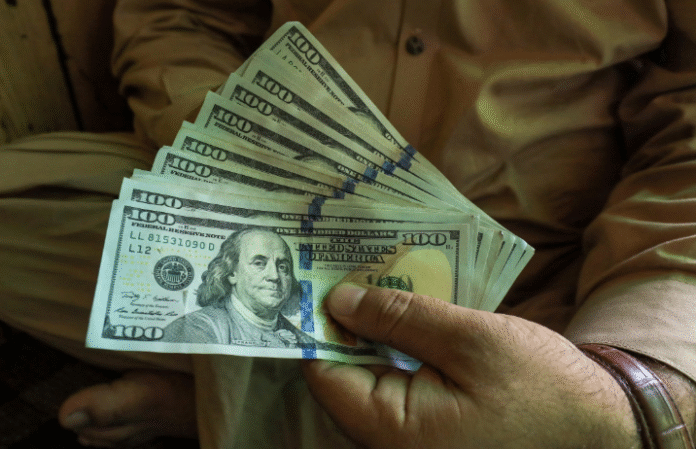Islamabad — The government’s recent attempt to curb the dollar’s value by cracking down on currency smuggling has yielded only a slight dip in exchange rates — and even that progress now appears to be unraveling, as market forces push back against what many describe as an unsustainable price ceiling.
Since July 23, authorities have been targeting dollar smugglers in an effort to bring the rupee-dollar exchange rate closer to Rs250 — a level they’ve repeatedly signaled as their goal. The move triggered a brief Rs3 drop in the greenback’s value in both interbank and open markets. But that minor correction has failed to shift broader market dynamics, where the dollar still hovers above Rs280.
Shortages Reported Despite Official Optimism
While the government maintains that supply is steady, multiple reports from the open market suggest otherwise. Dealers are complaining of a growing shortage of major foreign currencies — not just US dollars, but also British pounds and euros — tightening the squeeze on legitimate currency exchange.
Malik Bostan, President of the Forex Association of Pakistan, has attempted to calm the narrative, denying any significant shortage and insisting that the market is capable of meeting demand. But dealers on the ground paint a different picture — one where currency is scarce, and informal channels may be exploiting the situation.
Parallel Market Looms in the Background
According to several market participants, the apparent shortage may not be entirely organic. Instead, they suggest that the unofficial ‘hawala-hundi’ system and other grey-market operations are actively undermining the government’s controls. With artificially low targets set by authorities, dealers say these parallel networks are offering more attractive rates, diverting foreign currency away from official channels.
The consequence? A widening disconnect between state-set targets and market realities.
Banks Set Their Own Terms
Meanwhile, banks — particularly those licensed by the State Bank to sell dollars to importers — are sidestepping official guidelines by quoting rates that match actual demand. According to banking sources, these institutions are prioritizing their existing clients and setting rates as high as Rs281, effectively acknowledging that the government’s Rs250 target is not viable under current conditions.
Recent closed-door meetings in Islamabad between government officials, bankers, exchange dealers, and even jewelers underscore the growing tension. While authorities doubled down on their Rs250 target during these talks, most attendees reportedly viewed it as wishful thinking, not economic planning.
Control vs. Reality
What’s becoming increasingly clear is that exchange rate control in Pakistan is more a political aspiration than an achievable economic policy — at least for now. With rising global demand for dollars, inflationary pressures at home, and the persistent presence of an unregulated currency market, artificially suppressing the rupee’s exchange rate may prove to be more damaging than effective.
For now, the government’s grip on the exchange rate appears to be slipping — and market forces are asserting themselves with growing confidence.


